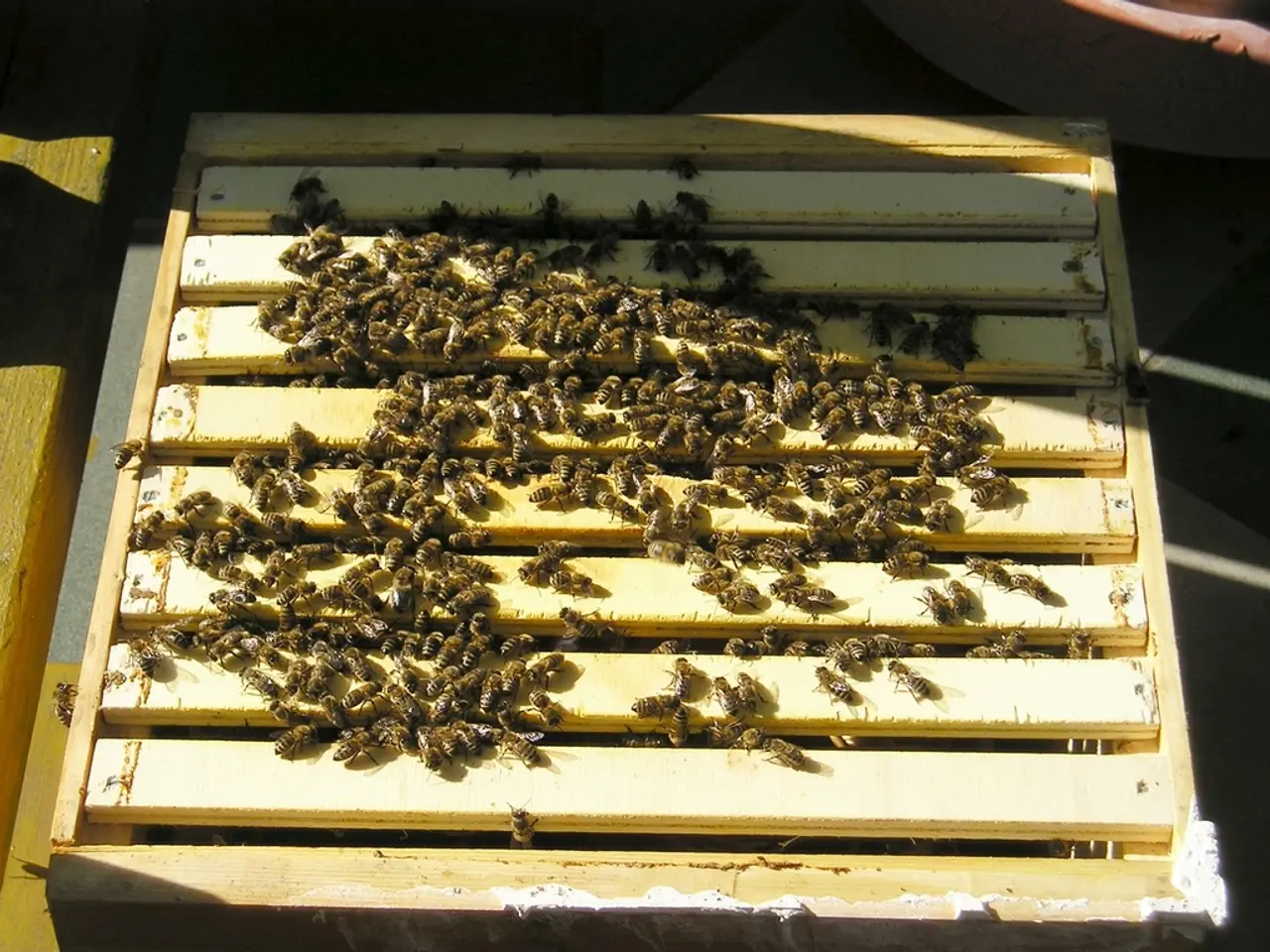Emergence of Large Ticks: First Occurrence of Spreading Among Human Populations
In recent times, the Hyalomma tick, a new species that was originally native to Africa and Asia, has been found in Germany. This development has raised concerns among health officials and citizens alike, as the Hyalomma tick is a known vector of the deadly Crimean-Congo hemorrhagic fever (CCHF) virus.
Hyalomma ticks are known for their active pursuit of potential victims. They can spot their prey from over 100 meters away, thanks to their keen eyesight. Once they have locked onto a target, they will actively pursue it for more than ten minutes.
These ticks are often found in meadows, forests, or even gardens. As such, citizens in Germany should take personal protective measures to avoid tick bites, reducing the risk of Hyalomma tick exposure. This includes wearing long sleeves and long pants when in areas where ticks may be present, such as grassy, wooded, or rural areas. Using insect repellents that are effective against ticks on skin and clothing is also advised.
After being outdoors, it's crucial to perform thorough tick checks on the body, clothing, and pets. Promptly removing any attached ticks is essential to prevent potential infection. Avoiding sitting directly on grass or leaf litter where ticks are likely to quest, and keeping grass and vegetation around residential areas trimmed to reduce tick habitat, are other effective precautions.
The European Centre for Disease Prevention and Control (ECDC) has issued recommendations for tick bite prevention, especially due to the presence of Hyalomma marginatum ticks in parts of Europe, including southern and eastern areas, and reports of their presence in Germany.
In healthcare settings, transmission can occur through contact with infected blood or bodily fluids. Therefore, protective measures in healthcare are also advised.
No specific national guidance beyond these general tick bite prevention measures has been identified for Germany. However, given the potentially serious CCHF infection linked to Hyalomma ticks, adherence to standard tick-protective behaviors is important.
In addition to the Hyalomma tick, other ticks in Germany can transmit bacterial Lyme disease, an infection that, if left untreated, can lead to serious late effects affecting various organs such as the nervous system, joints, or heart. A man in Spain has recently been infected with Crimean-Congo hemorrhagic fever by ticks. If left untreated, CCHF can be fatal.
Recent reports have also highlighted the presence of toxic harvest mites in Baden-Württemberg, Germany, further emphasizing the need for vigilance.
In summary, wearing protective clothing, using repellents, checking for ticks, and managing vegetation are key precautions against Hyalomma tick exposure in Germany. By following these measures, citizens can significantly reduce their risk of encountering these potentially dangerous ticks and the diseases they carry.
[1] European Centre for Disease Prevention and Control. (2021). Hyalomma marginatum ticks in Europe – Assessment of the risk for Crimean-Congo haemorrhagic fever virus transmission in the European Union and the European Economic Area – Rapid risk assessment. Retrieved from https://www.ecdc.europa.eu/en/publications-data/hyalomma-marginatum-ticks-europe-assessment-risk-crimean-congo-haemorrhagic-fever [3] European Centre for Disease Prevention and Control. (2021). Climate change and tick-borne diseases in Europe – Rapid risk assessment. Retrieved from https://www.ecdc.europa.eu/en/publications-data/climate-change-and-tick-borne-diseases-europe-rapid-risk-assessment
Medical-conditions such as the Crimean-Congo hemorrhagic fever (CCHF) can be transmitted by the Hyalomma tick, a newly discovered species in Germany. To minimize exposure, citizens should consider practices that promote health-and-wellness, including wearing protective clothing, using repellents, and checking for ticks post-outdoor activities.
Environmental-science also plays a crucial role in preventing tick-borne diseases, as managing vegetation and reducing tick habitat can significantly decrease the risk of encounters with potentially dangerous species like Hyalomma ticks.




